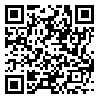Volume 4, Issue 4 (December 2019)
J Environ Health Sustain Dev 2019, 4(4): 866-878 |
Back to browse issues page
Department of Environmental Management, Faculty of Natural Resources and Environment, Science and Research Branch, Islamic Azad University, Tehran, Iran.
Abstract: (2021 Views)
Introduction: In Tehran with a population of 9 million currently, about 2.5 million tons municipal solid waste have been producing annually.
Materials and Models: In this study by using Life Cycle Assessment (LCA) model an optimal system of waste management of Tehran was recommended. Based on the quantity and quality of waste in Tehran in 2013 and facilities, three scenarios were selected. First, current status (15% compost, 5% recycling and 80% landfill), second, the maximum use of the capabilities of waste of Tehran (70% compost, 20% recycled and 10% landfill ) and third, the optimal scenario according to conditions of Tehran (55% compost, 10% recycling, 5% energy recovery and 30% landfill). The IWM model and WRATE model was used for Phase II and Phase III, respectively.
Results: Results of the conducting second Phase showed in compared to the first scenario by the second and third scenario, the amount of emissions was decreased 64% and 72%, respectively. The third phase results showed the third scenario has the lowest environmental impact in chosen six impact groups.
Conclusion: Considering the quality and quantity of wastes in Tehran and also the current facilities, conducting the third scenario could be useful for reducing emissions, the external costs and environmental impacts.
Materials and Models: In this study by using Life Cycle Assessment (LCA) model an optimal system of waste management of Tehran was recommended. Based on the quantity and quality of waste in Tehran in 2013 and facilities, three scenarios were selected. First, current status (15% compost, 5% recycling and 80% landfill), second, the maximum use of the capabilities of waste of Tehran (70% compost, 20% recycled and 10% landfill ) and third, the optimal scenario according to conditions of Tehran (55% compost, 10% recycling, 5% energy recovery and 30% landfill). The IWM model and WRATE model was used for Phase II and Phase III, respectively.
Results: Results of the conducting second Phase showed in compared to the first scenario by the second and third scenario, the amount of emissions was decreased 64% and 72%, respectively. The third phase results showed the third scenario has the lowest environmental impact in chosen six impact groups.
Conclusion: Considering the quality and quantity of wastes in Tehran and also the current facilities, conducting the third scenario could be useful for reducing emissions, the external costs and environmental impacts.
Type of Study: Original articles |
Received: 2019/07/20 | Accepted: 2019/10/20 | Published: 2019/12/21
Received: 2019/07/20 | Accepted: 2019/10/20 | Published: 2019/12/21
| Rights and permissions | |
 |
This work is licensed under a Creative Commons Attribution-NonCommercial 4.0 International License. |





